One of the best ways to prepare for any DB2 certification exam is by answering practice questions that are similar to, and that are presented in the same format as, the questions you are likely to encounter when you take the actual exam.
Editor’s note: This article is adapted from DB2 10.5 DBA for LUW Upgrade from DB2 10.1: Certification Study Notes (Exam 311) by Roger E. Sanders.
A few months after the “IBM DB2 10.5 DBA for LUW Upgrade from DB2 10.1” certification exam (Exam 311) was announced, I spent several weeks developing training material that I could use to help individuals prepare for the 311 certification exam. I used the same technique to develop material for that course that I have used to develop my other DB2 certification exam preparation courses and study guides: I carefully reviewed notes I had taken during the exam development process, as well as the questions I wrote for that particular test, and I made sure I covered, in detail, all the objectives that had been defined for that certification exam.
After presenting this material to a DB2 customer, I altered it to improve some of the material I saw class participants struggling with. I then used the updated material to teach a “DB2 10.5 for Linux, UNIX, and Windows Database Administration Certification Upgrade Exam Preparation” educational seminar at the 2015 International DB2 User’s Group (IDUG) North American Conference.
In January 2016, I was invited to teach my DB2 10.5 DBA certification preparation course at the IDUG conference again. And because several individuals had contacted me asking if I would consider making my training material available, I contacted MC Press and suggested we publish my material, along with a set of practice questions and answers, in a book that anyone wanting to take Exam 311 could use as an exam study guide. The result is my latest book, DB2 10.5 DBA for LUW Upgrade from DB2 10.1: Certification Study Notes.
Because much of this book consists of the material I use to teach my educational seminar, it is presented in the form of slides. For example, the following slides, which can be seen on pages 35 to 37, describe the method that is used to compress column-organized tables.
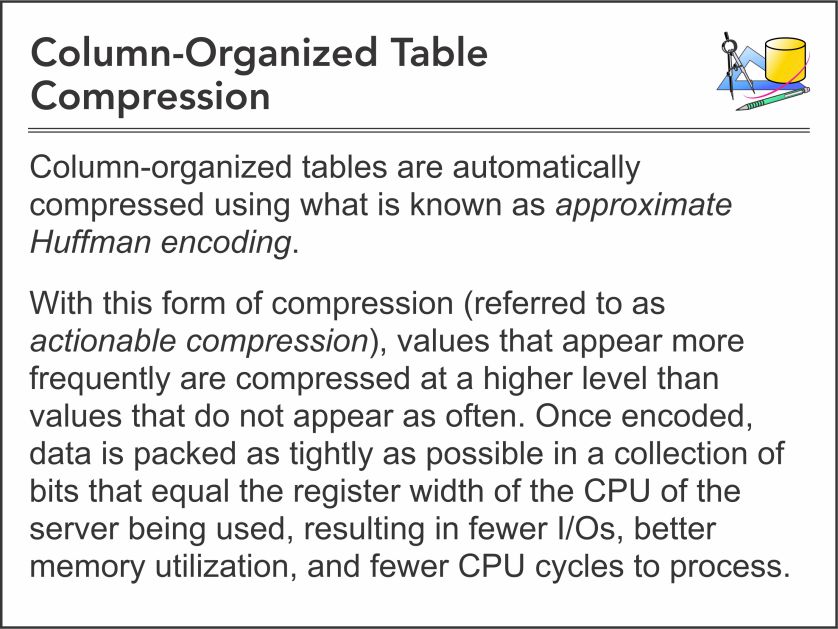
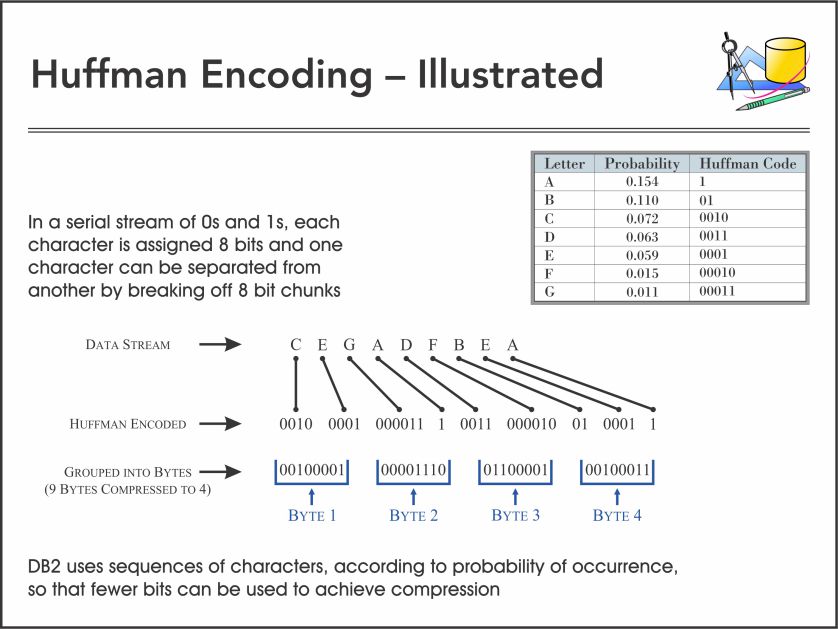
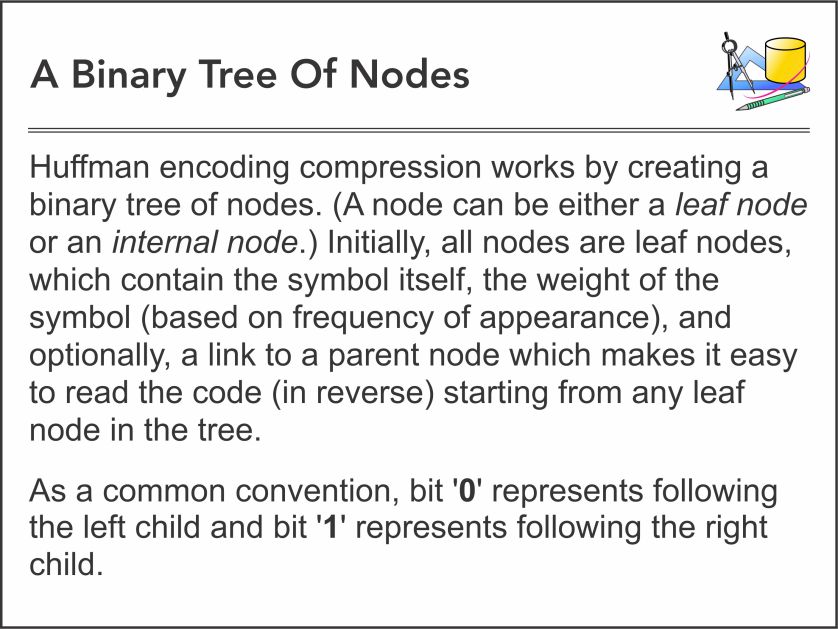
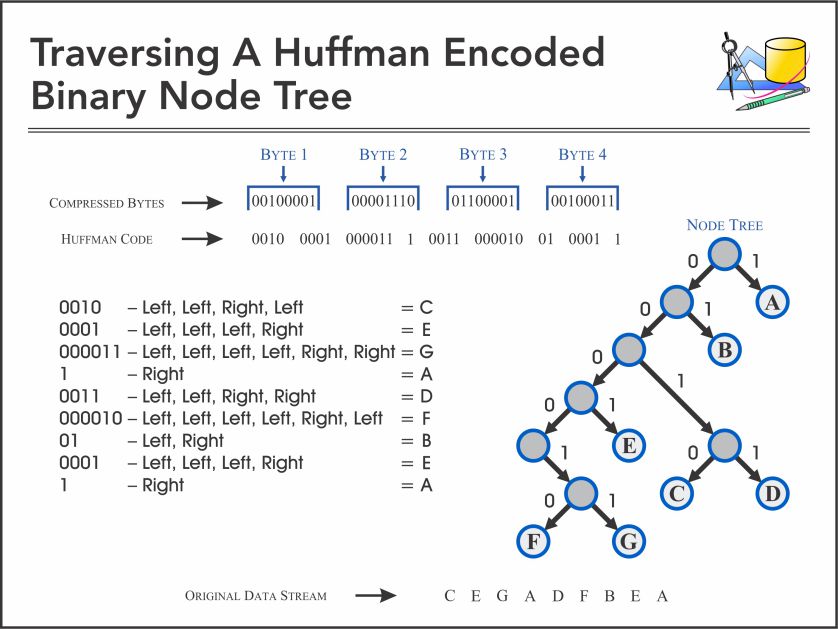
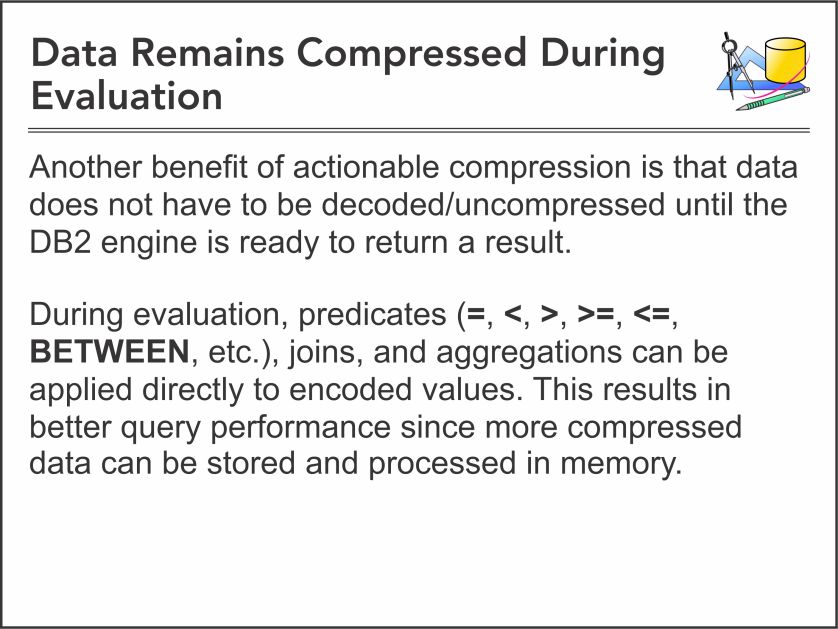
In my opinion, one of the best ways to prepare for any DB2 certification exam is by answering practice questions that are similar to, and that are presented in the same format as, the questions you are likely to encounter when you take the actual exam. Therefore, in the remaining portion of the book, you will find 56 practice questions, as well as comprehensive answers for each question. (It’s not enough to know which answer is correct; it’s also important to know why a particular answer is correct—and why the other choices are wrong!). All these questions were developed using copious notes that were taken during the exam development process; as a member of the team that developed the DB2 10.5 DBA for LUW Upgrade from DB2 10.1 certification exam (Exam 311), I had the opportunity to see every question that was created for this exam!
Here is an example of a practice question that you’ll find in the book:
Which two characteristics are related to BLU Acceleration? (Choose two.)
- “Always on” adaptive row compression
- Default and referential integrity informational constraints
- Enhanced caching strategy that improves buffer pool utilization
- Significantly smaller storage footprint for database transaction logs
- Multiplied CPU power that uses Single Instruction Multiple Data (SIMD) instructions for many operations
And the answer to this particular question looks like this:
The correct answers are C and E. DB2 10.5 with BLU Acceleration was designed around the following seven “big ideas”:
1. Simple to implement and use
2. Compute-friendly approximate Huffman encoding and compression
3. Multiply the power of the CPU (by taking advantage of SIMD)
4. Column data store
5. Core-friendly parallelism
6. Scan-friendly memory caching that improves buffer pool utilization
7. Data skipping
Adaptive row compression is neither “always on” nor is it part of BLU Acceleration (Answer A); although referential integrity informational constraints have been available for quite some time, default informational constraints are not supported (Answer B); and while the use of BLU Acceleration can result in a smaller storage footprint for data, the same cannot be said for transaction logs (Answer D).
With 169 comprehensive slides and 56 practice questions with detailed answers like this, the reader should come away with a strong understanding of the concepts that must be mastered in order to obtain IBM Certified Database Administrator—DB2 10.5 DBA for LUW Upgrade from DB2 10.1 certification.
























 Business users want new applications now. Market and regulatory pressures require faster application updates and delivery into production. Your IBM i developers may be approaching retirement, and you see no sure way to fill their positions with experienced developers. In addition, you may be caught between maintaining your existing applications and the uncertainty of moving to something new.
Business users want new applications now. Market and regulatory pressures require faster application updates and delivery into production. Your IBM i developers may be approaching retirement, and you see no sure way to fill their positions with experienced developers. In addition, you may be caught between maintaining your existing applications and the uncertainty of moving to something new. IT managers hoping to find new IBM i talent are discovering that the pool of experienced RPG programmers and operators or administrators with intimate knowledge of the operating system and the applications that run on it is small. This begs the question: How will you manage the platform that supports such a big part of your business? This guide offers strategies and software suggestions to help you plan IT staffing and resources and smooth the transition after your AS/400 talent retires. Read on to learn:
IT managers hoping to find new IBM i talent are discovering that the pool of experienced RPG programmers and operators or administrators with intimate knowledge of the operating system and the applications that run on it is small. This begs the question: How will you manage the platform that supports such a big part of your business? This guide offers strategies and software suggestions to help you plan IT staffing and resources and smooth the transition after your AS/400 talent retires. Read on to learn:
LATEST COMMENTS
MC Press Online